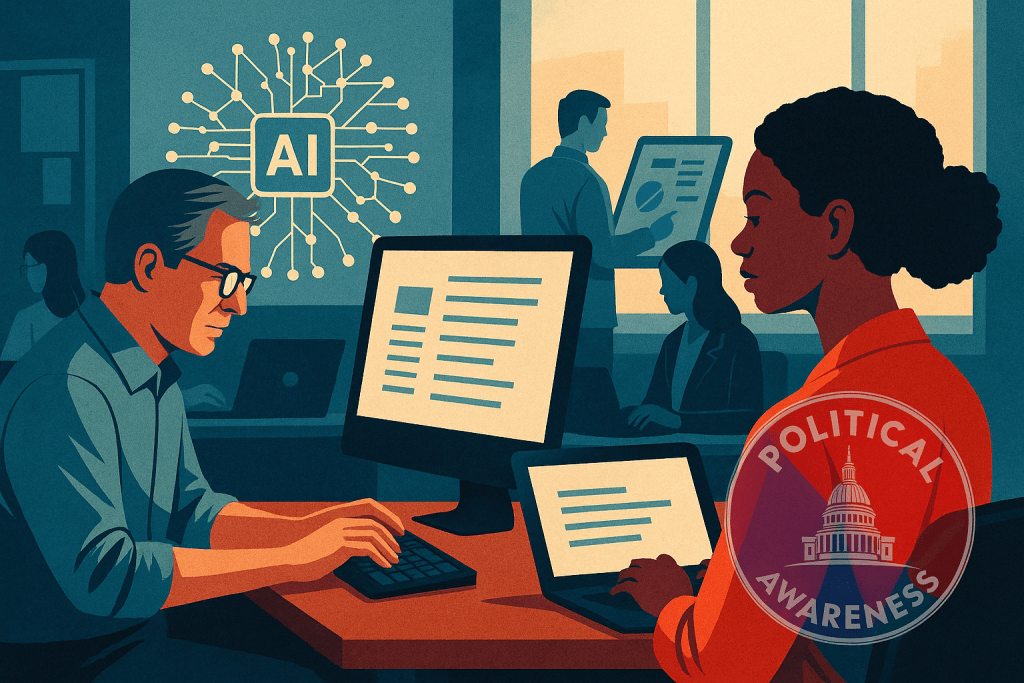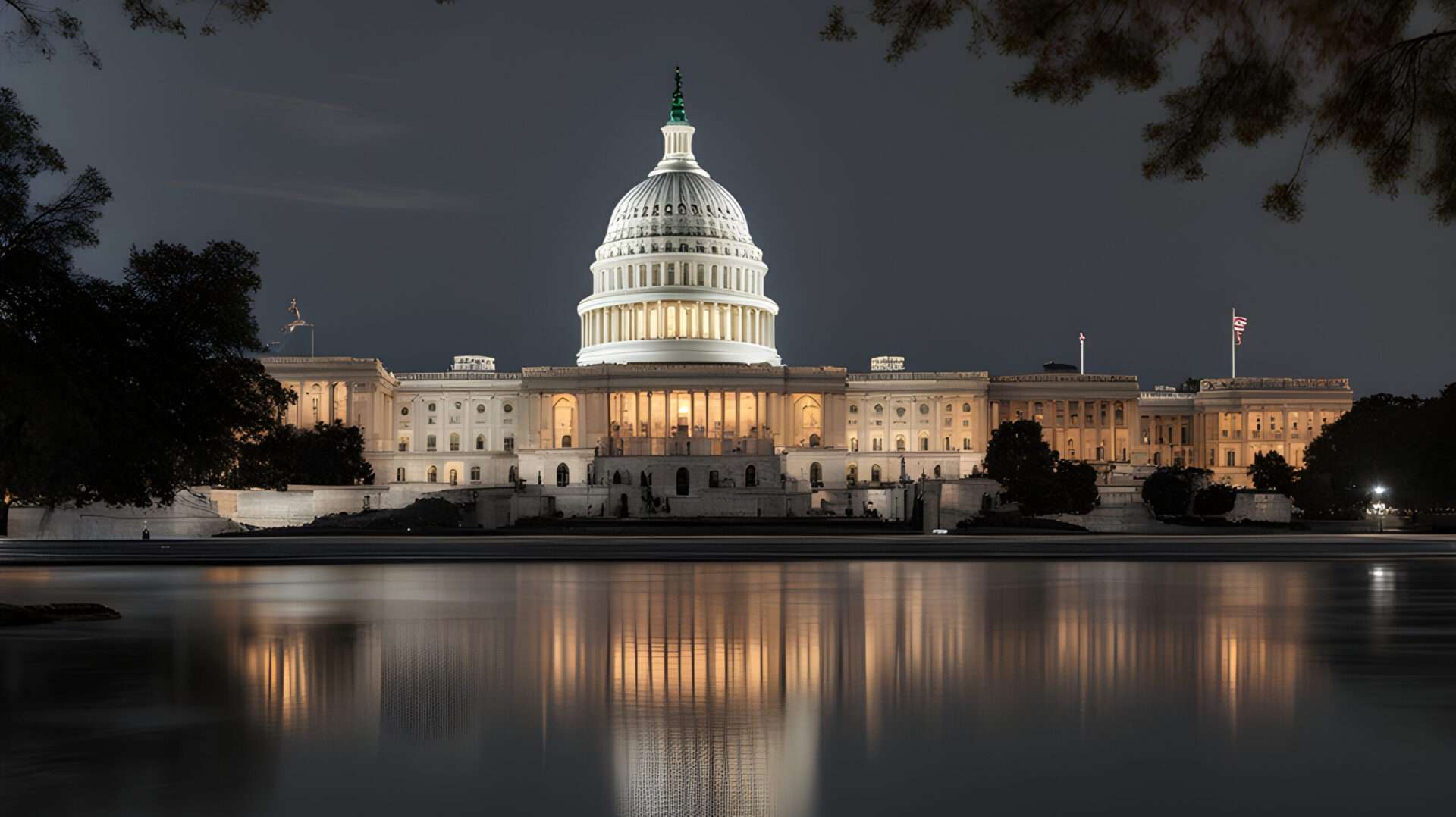Note: Political Awareness’s published communication is never authorized by any candidate or their committees.
The AI Economy: How Generative AI is Rewriting Jobs and Policy
The rise of generative AI has moved faster than the labor market, faster than legislation, and in many ways, faster than the imagination of policymakers. What began as a set of research tools has transformed into widely accessible platforms that generate text, images, code, and sound. The technology’s growth has created both promise and anxiety: productivity gains for some, replacement fears for others, and a looming question for Washington—how do you regulate an economy being rewritten in real time?
The impact on jobs is already measurable. Customer service centers, marketing departments, and even law firms have shifted tasks toward AI systems. Some workers have seen roles eliminated outright; others find their work reshaped into higher-value, AI-assisted labor. This uneven distribution highlights the first great policy challenge: retraining. Unlike past waves of automation, AI is moving into white-collar and creative domains, not just assembly lines. The traditional “manufacturing-to-service” retraining model won’t fit. Workers need digital literacy, critical reasoning, and adaptability, not just vocational transitions.
Public policy, however, is still catching up. State programs in workforce development have expanded digital skills training, but funding remains inconsistent. Federal efforts through grants and community colleges show promise, yet scale is limited. If AI is to integrate without leaving millions behind, retraining cannot be treated as a patchwork—it requires national strategy and sustained investment.
Wages tell another story. Productivity rises with AI, but unless policy ensures the benefits are shared, gains will concentrate at the top. Economists already warn of “AI inequality,” where firms that master these tools consolidate market share and push out competitors. Without guardrails, the pattern repeats: a few winners, many losers. This is where antitrust, tax policy, and labor law must intersect. Governments can incentivize companies to reinvest AI-driven profits into workforce training, rather than funneling them solely into shareholder returns.
Social safety nets also face a stress test. If AI disrupts jobs faster than workers can adapt, unemployment insurance and portable benefits will become critical lifelines. Policymakers are discussing wage insurance, which would supplement incomes for workers forced to accept lower-paying jobs during transitions. Ideas like universal basic income resurface in these debates, though they remain politically polarizing. Still, the underlying question is unavoidable: what should the state guarantee when technology accelerates displacement?
Education policy carries equal weight. The value of traditional degrees is under scrutiny as AI reshapes career pathways. Should federal student aid prioritize digital literacy and AI-era certifications? Should apprenticeships and employer-led training receive new subsidies? The economy needs answers, because the next generation of workers will enter a labor market where AI fluency is as essential as basic math or writing.
AI Regulations
Regulation, of course, lags behind. Europe has advanced AI legislation, but in the U.S., congressional hearings have produced more sound bites than statutes. The challenge lies in writing laws flexible enough to adapt with the technology yet firm enough to set standards for transparency, bias, and accountability. Industry leaders themselves are calling for frameworks, partly to stabilize markets, but partisan divides remain. Republicans often stress innovation and competitiveness, Democrats emphasize protections and fairness, and bipartisan momentum falters.
The private sector is not standing still. Major firms are funding AI literacy programs and launching partnerships with universities. Yet without coordination, these initiatives risk reinforcing inequities—accessible only to those already close to opportunity. Public-private cooperation will be crucial. The policy question is whether government acts as a partner, a regulator, or both.
The AI economy is not a distant horizon. It is unfolding now, shaping how companies hire, how schools prepare students, and how governments think about inequality. If policymakers treat AI as simply another “tech wave,” they will miss its distinct nature: generative AI is not just a tool for efficiency but a reshaper of knowledge work, creativity, and decision-making itself.
The task before Washington is not to slow the future but to make it navigable. That means building a safety net that cushions transitions, retraining programs that prepare workers for new roles, and regulations that align private incentives with public good. The AI economy is real, and it will not wait. The choice is between managing the transition or letting the transition manage us.


Leave a Reply